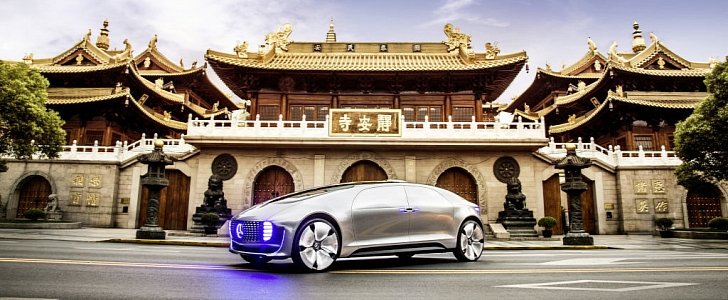If you’ve ever ridden as a passenger in a car and spent way too much time with your eyes looking at a phone or tablet (and you probably have), then you may have experienced motion sickness as well.
The simple explanation of motion sickness is this: your brain gets confused because of the contradicting messages it gets from your different sensory organs, says “to hell with it, I’m going home” and you’re left feeling oozy. That contradiction comes from the information relayed by the eyes that tell your brain you’re standing still, and that sent in by the internal ear that says “oh, no, we’re definitely moving.”
Since you refuse to lift your nose from your phone, look outside the window and go “it’s OK, brain, the eyes are retarded, don’t mind them, we’re actually moving,” you’re basically putting your brain into a very awkward situation. It’s basically the reverse of what happens with a VR set that displays a moving scene.
Now that we’ve roughly established what motion sickness is and what triggers it, it’s plain to see why autonomous cars will pose a significant problem in this respect. Yes, nobody, not even the “driver,” will be bothered to look outside, choosing to do something a lot more useful like browsing Facebook instead. That means he’ll get to his destination up to date with what his friends are doing, but also very likely to need breakfast again very soon.
Of all the possible entities that could have thought about this problem, it was interiors suppliers Faurecia who got together with researchers from the Stanford University and decided to study this problem that self-driving cars will undoubtedly put forward.
There’s a hidden reason: Faurecia sees the imminence of driverless vehicles, so it wants to nip the problem in the bud and offer their future occupants interior design solutions that will help alleviate the sickness.
The study also intends to follow how people feel about driverless cars and whether or not they need more safety features and extra information about what’s going on differently in this type of cars than in normal cars to feel at large with an autonomous vehicle.
The results are still some time away from reaching a conclusion, but the wheels are in motion. In fact, Faurecia says it will have some early concepts as soon as six months from now. Hear that, autonomous cars developers? Get a move on, your interior solutions will be waiting for you.
Since you refuse to lift your nose from your phone, look outside the window and go “it’s OK, brain, the eyes are retarded, don’t mind them, we’re actually moving,” you’re basically putting your brain into a very awkward situation. It’s basically the reverse of what happens with a VR set that displays a moving scene.
Now that we’ve roughly established what motion sickness is and what triggers it, it’s plain to see why autonomous cars will pose a significant problem in this respect. Yes, nobody, not even the “driver,” will be bothered to look outside, choosing to do something a lot more useful like browsing Facebook instead. That means he’ll get to his destination up to date with what his friends are doing, but also very likely to need breakfast again very soon.
Of all the possible entities that could have thought about this problem, it was interiors suppliers Faurecia who got together with researchers from the Stanford University and decided to study this problem that self-driving cars will undoubtedly put forward.
There’s a hidden reason: Faurecia sees the imminence of driverless vehicles, so it wants to nip the problem in the bud and offer their future occupants interior design solutions that will help alleviate the sickness.
The study also intends to follow how people feel about driverless cars and whether or not they need more safety features and extra information about what’s going on differently in this type of cars than in normal cars to feel at large with an autonomous vehicle.
The results are still some time away from reaching a conclusion, but the wheels are in motion. In fact, Faurecia says it will have some early concepts as soon as six months from now. Hear that, autonomous cars developers? Get a move on, your interior solutions will be waiting for you.

